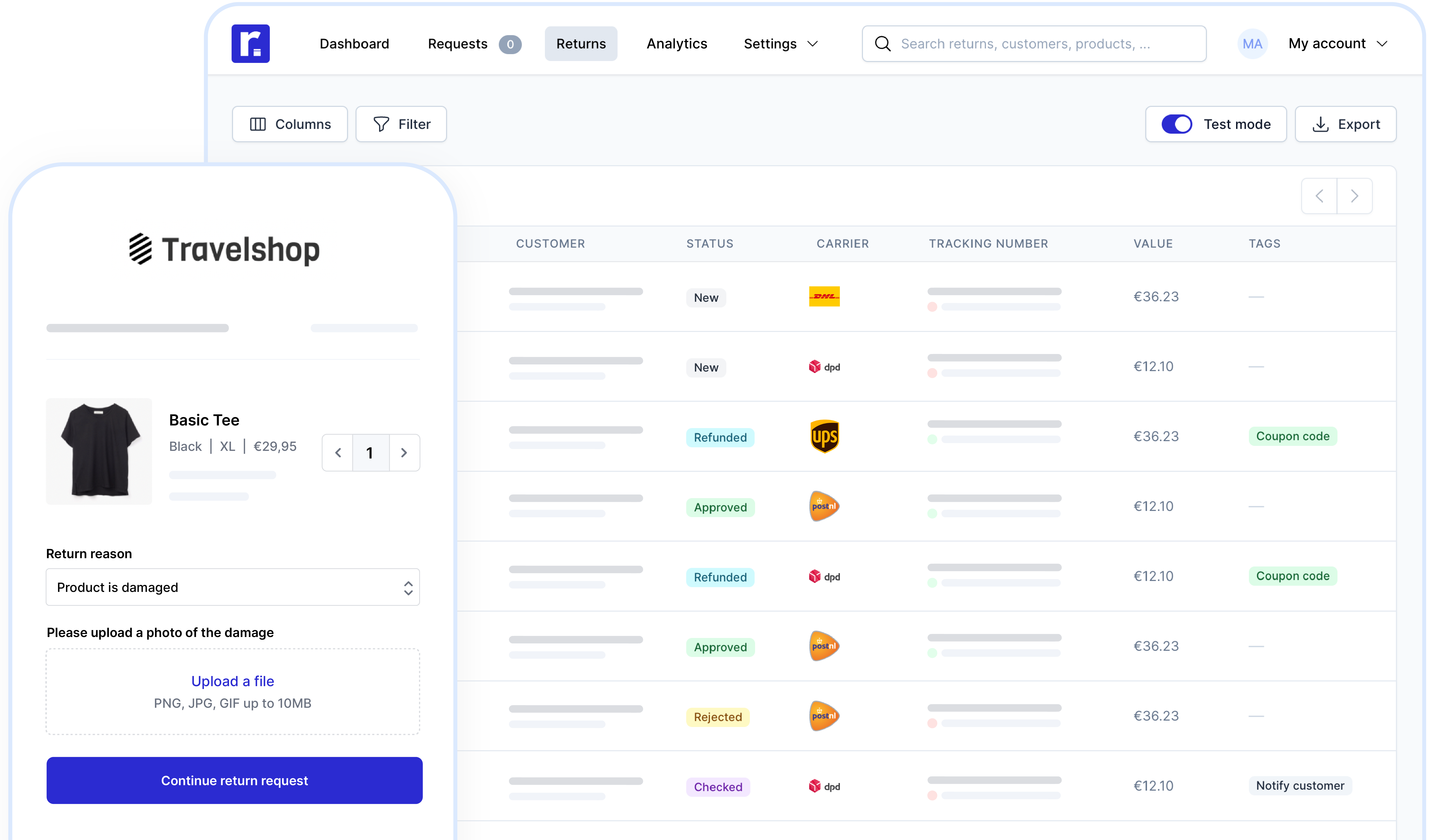
Author
Tessa Stoppelenburg
Date
June 13, 2025
Category
Tips for webshops
Paid or free returns? This question is keeping online stores increasingly busy. Large e-commerce players, such as Zara and H&M, have been experimenting with paid returns for some time, and smaller stores are now following their lead. Ultimately, the goal is to reduce the number of returns. After all, fewer returns are not only better for the bottom line, but also for the environment. However, misuse of return fees or poor communication about return policies can actually be a conversion killer and make the customer experience worse.
In this article, we list all the pros and cons of paid and free returns for you and show you how you can use a smart return policy to maximize the return of your online store, without compromising the customer experience.
What do consumers think about paid returns?
84% of customers take the return policy into account when making a purchase decision. Some consumers are less inclined to buy from stores that do not offer free returns, which can negatively affect conversion. Nevertheless, it seems that a tipping point has been reached and most customers are now aware of the negative consequences of free returns, especially to the environment. So environmentally conscious customers may actually see it as something positive that returns are discouraged. All in all, consumers today are showing increasing understanding of paid returns.
Finding the right balance between a return policy that reduces your returns and keeping a customer-friendly process is ultimately the goal. The first step in this is putting together a clear return policy in which consumers can read in advance what to expect in any return situation. A clear return policy is also crucial for you as a webshop owner when it comes to profit maximisation. Only with an understandable and clear return policy you can apply flexible return conditions without negatively impacting customer experience.
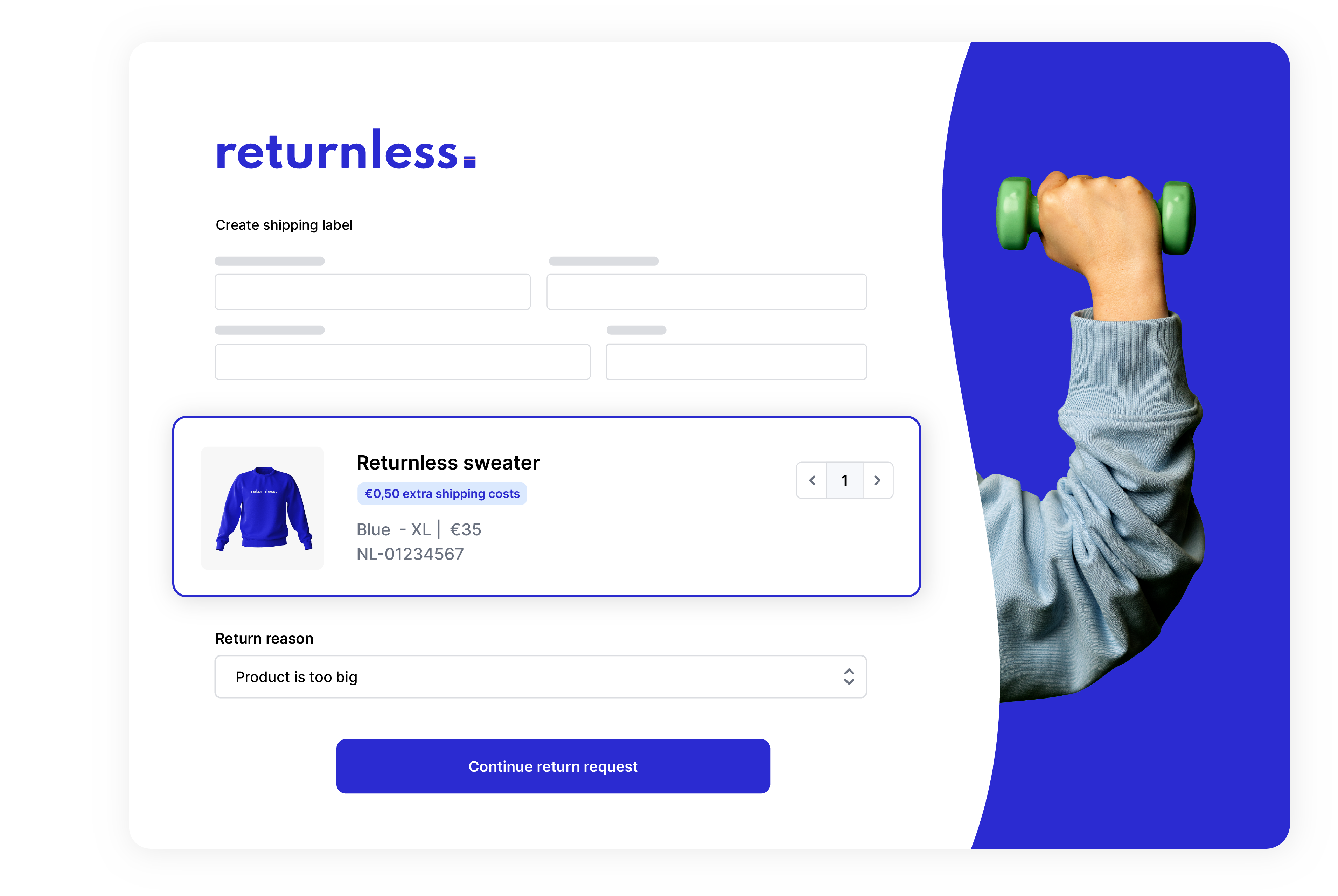
Should you use paid returns?
Even if all returns in your store are paid returns, you will still need to offer the return of a defective product for free. This is simply part of a good customer experience. Fortunately, in some cases you can still save on shipping costs. In Returnless' digital return form, the customer selects the reason for the return. If he selects "defective," you can have the customer upload a photo of the defect.
This allows you to immediately determine whether it is worth receiving the product back. If yes, the customer can download a return label that allows him to return the product for free. If no, you can choose to allow the customer to keep the defective product and be compensated with a credit or replacement product.
When do you use paid returns?
1. Encourage more conscious buying behaviour and reduce unnecessary returns
Especially in the fashion industry, people often "overorder": customers buy multiple colors or sizes out of convenience only to try on the clothes at home. With these orders, it is already clear the moment it is placed that the customer is going to return it - also known as fitting room returns. These returns not only weigh heavily on your profits, but also unnecessarily pollute the environment. By having customers pay for their own return costs in this case, you can encourage more conscious buying behavior and reduce unnecessary returns. This can be done through a paid return label or even with a fixed amount per returned item. In this case the consumer pays a small extra fee per returned item.
Research by the Forschungsgruppe Retourenmanagement at the Otto-Friedrich-Universität Bamberg shows that charging a €2.95 return fee per item can reduce the number of returns by 16%.
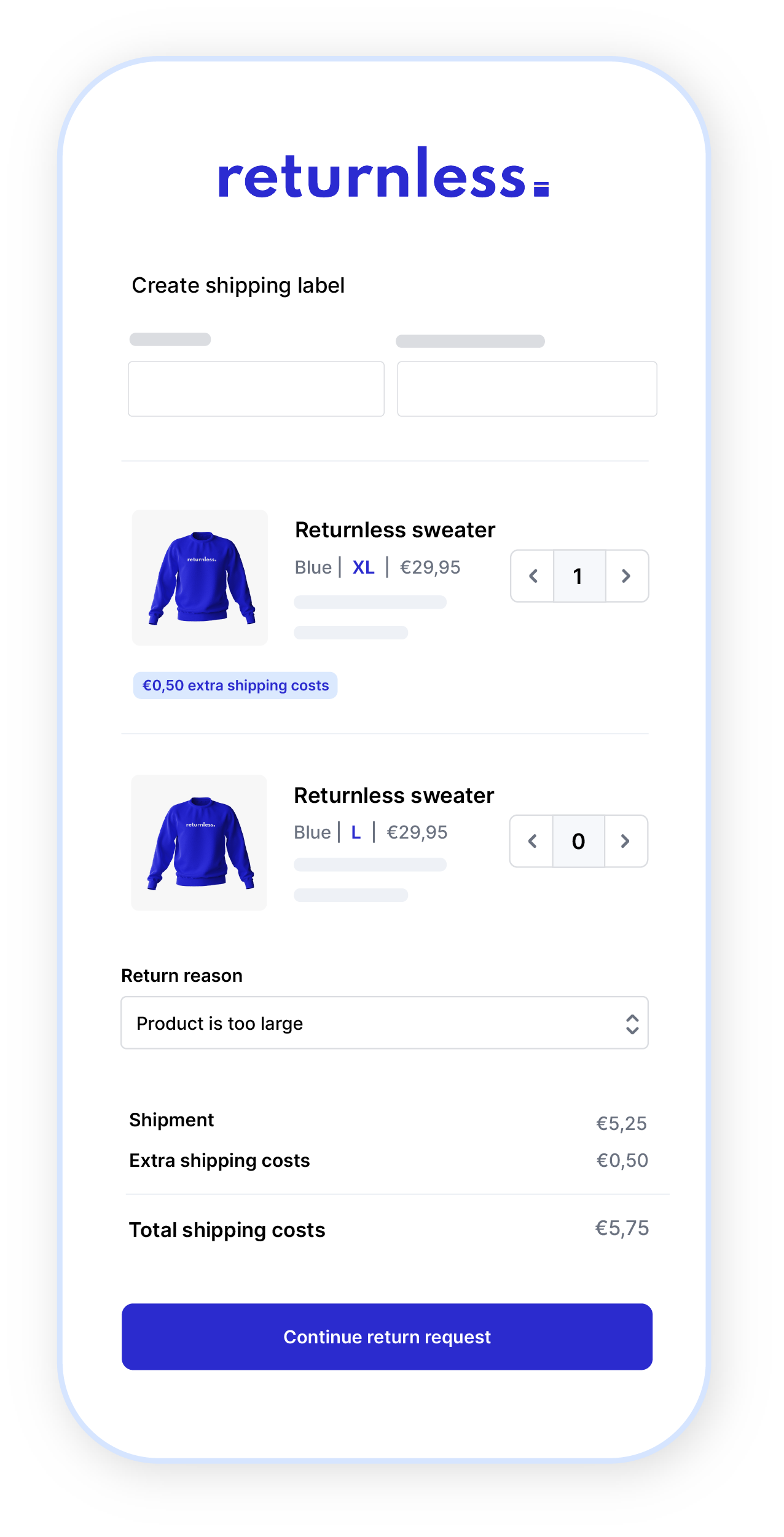
2. Additional costs for specific products
Return costs are not the same in all industries. Large items, for example from the home & living industry, and international shipments are extra expensive to return and often take more effort to process. Personalized products can also cause higher costs. These types of returns often result in depreciation in value because the product can no longer be resold. You may choose to pass on additional costs to the customer in these cases. However, to avoid irritations and misunderstandings, make sure that you clearly state these cases in your return policy as well.
3. Free returns based on order value
Another possible criteria for offering paid or free returns is the order value. For example, if the customer keeps at least 75% of the order value, the margin is large enough to offer the customer a free return. For example, if the customer does return a large portion of the order, then they must pay the return cost himself.
Tip: Look at the product value
Of course it depends on your margins if you want to apply return costs based on order value. If you sell luxury products, it is better to add a (return) shipping surcharge to your products in advance. For products in the lower or middle segment, the order value can be a good criteria to determine whether or not you want to offer the customer a free return option.
4. Free returns for defects
Even if all returns in your store are paid returns, you will still need to offer free returns for a defective product. This is simply part of a good customer experience. Fortunately, in some cases you can still save on shipping costs. In Returnless' digital return form, the customer selects the reason for the return. If he selects "defective," you can have the customer upload a photo of the defect. This allows you to immediately determine whether it is worth receiving the product back. If yes, the customer can download a return label that allows him to return the product for free. If not, you can choose to allow the customer to keep the defective product and be compensated with a credit or replacement product.
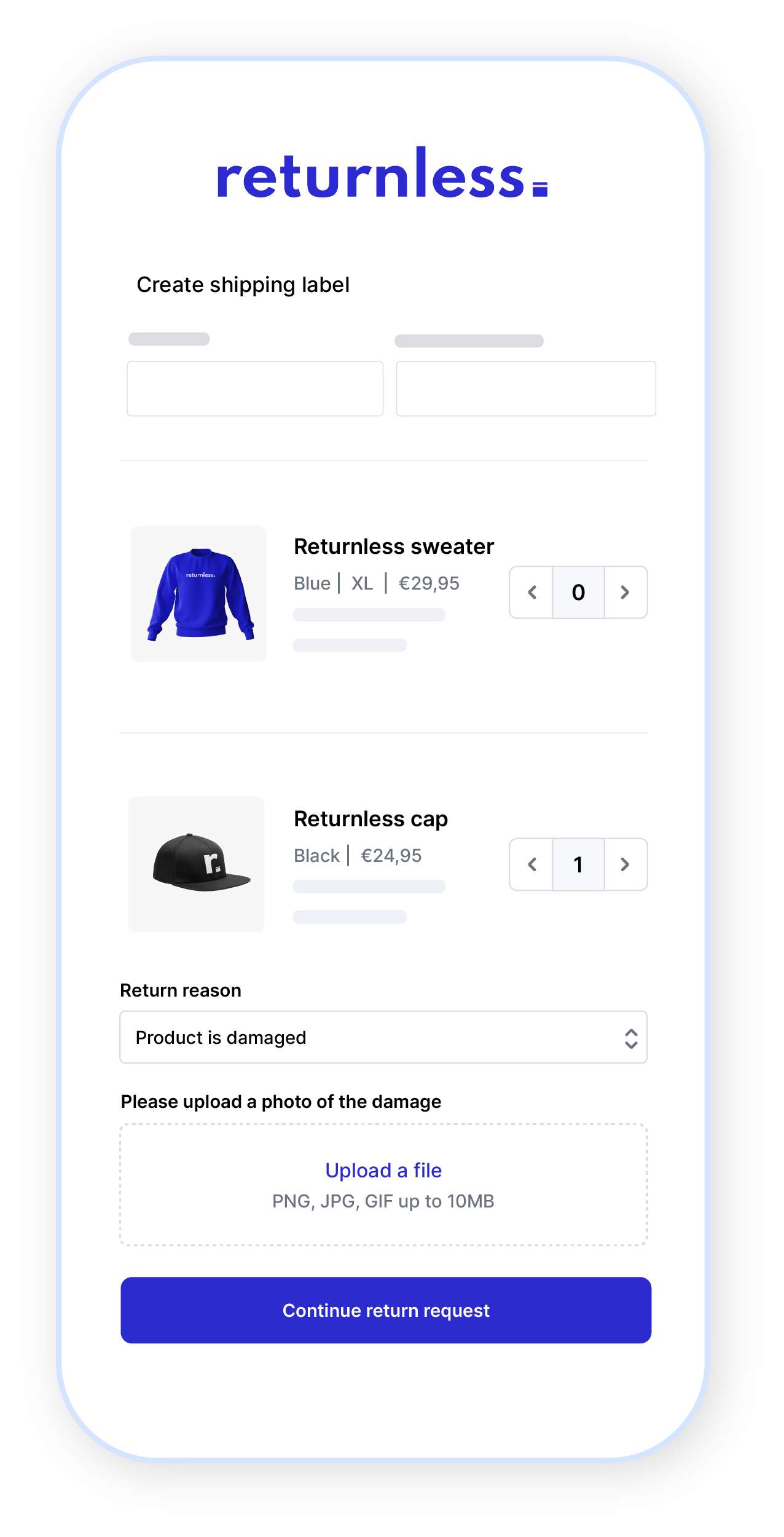
5. Encourage quick returns
The faster a customer returns a product, the faster it will be back in your warehouse - and thus available for resale. With traditional return methods, you can generate little to no incentive for your customer to return quickly. However, a flexible and digital returns process offers more options, such as setting up a free return if a consumer registers the return within two weeks of receiving the order. If the customer still wants to return later, they must pay to download a return label.
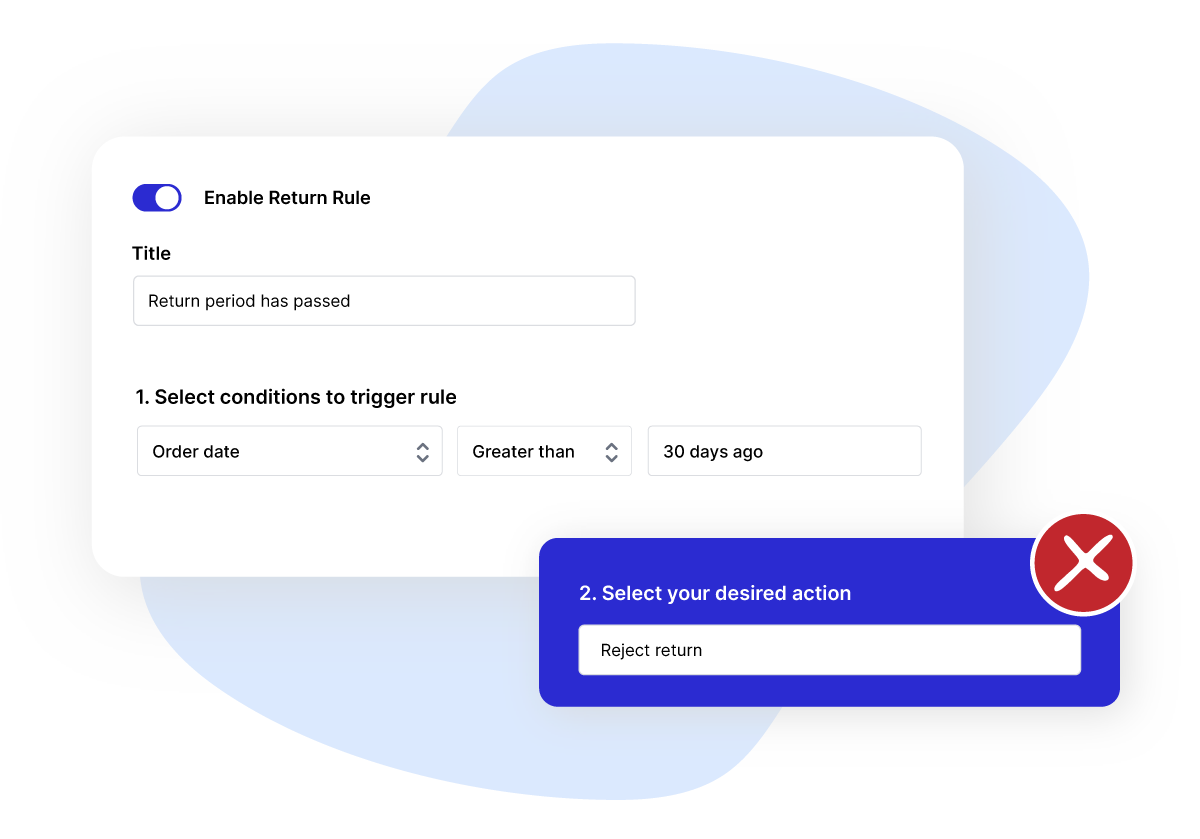
Tip: Disapprove invalid returns
Returnless' Gate-Keeper allows you to set a certain return period. If a consumer want's to return their product after that period, the return can be automatically rejected or send trough to customer service. This is something that is not possible with the classic label-in-the-box method.
6. Reward loyal customers
You can also use your return policy to reward loyal customers who return infrequently. For example, you can offer free returns to customers who have returned less than five times in the past year. However, for customers who return frequently, you can charge a return fee.
Tip: Look at the 'real customer value'
It also works the other way around. Some customers return a large portion of their order each time. If a customer returns a certain number of products over a period of time, you can choose to set up paid returns.
How do you install paid returns?
So there are several cases where you can purposefully use paid returns. Firstly define the different return cases for your online store and industry and set up a clear return policy.
Then you can set additional shipping costs for the different cases within Returnless with Returnless rules. This tells Returnless exactly how much shipping costs should be charged for each type of return. You can easily filter by country, product, category, etc. and add the specific charges for each case individually. When reporting the return, the consumer can immediately see any additional costs. So no unpleasant surprises and a smooth and transparent return process for yourself and your customers.
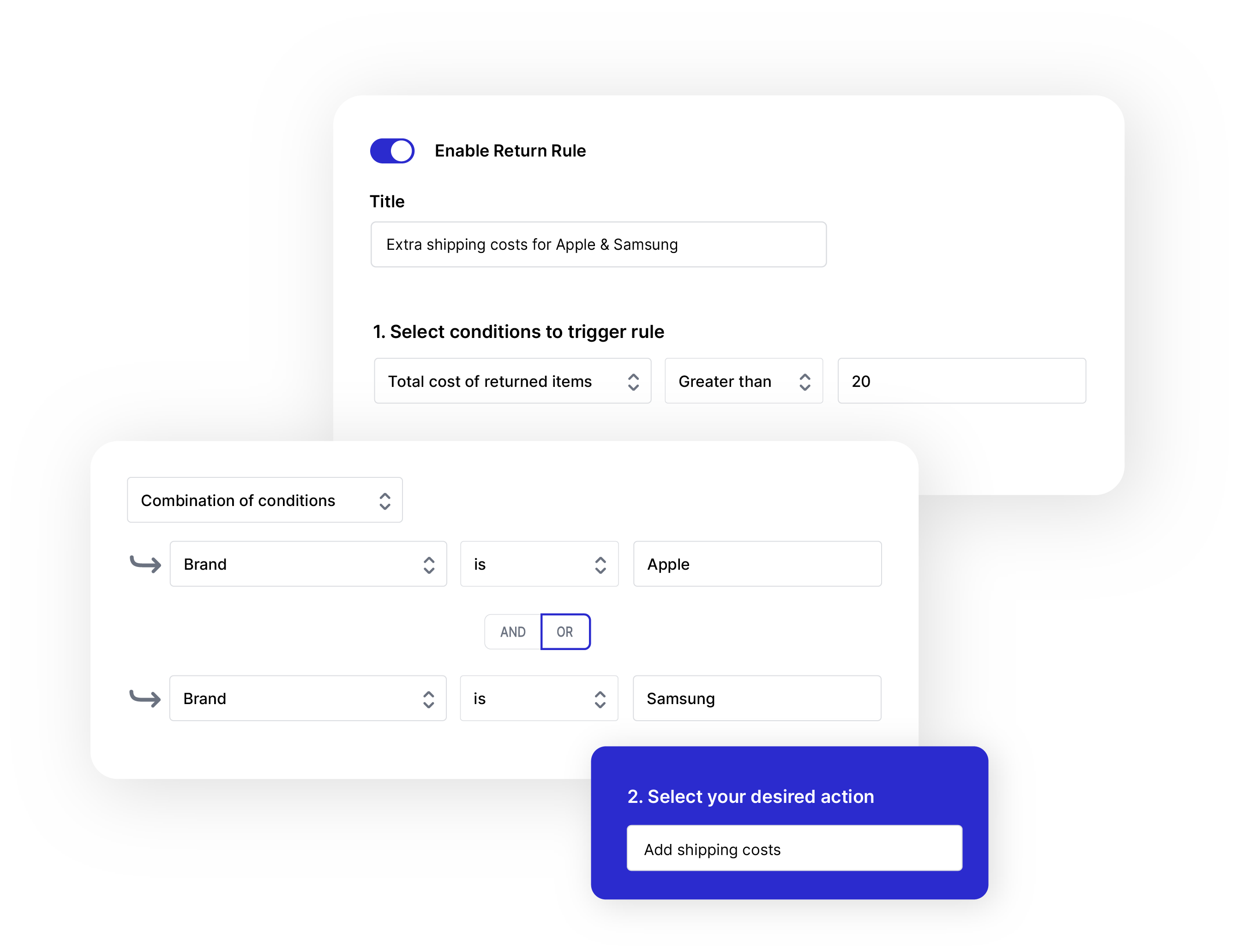
Tip: Calculating shipping costs with Return Rules
You can also use shipping costs to offer discounts on a return. For example, when customers choose a coupon with shop credit instead of a refund when returning their item.
How do you install free returns?
Even though free returns by themselves are not profitable, there are cases where it makes sense to give a customer this option. For example, you can reward loyal customers with a free return and thus increase customer satisfaction and encourage repeat purchases. In addition, when the return is (partly) caused by you, such as defective products, it is a good idea not to charge the customer for the return costs.
Fortunately, Returnless allows you to easily enable free returns for specific situations. These can then be granted automatically - or, if you prefer, after a manual check from your customer service department.
Want to know exactly how this works? Create a free account and try it out for yourself!
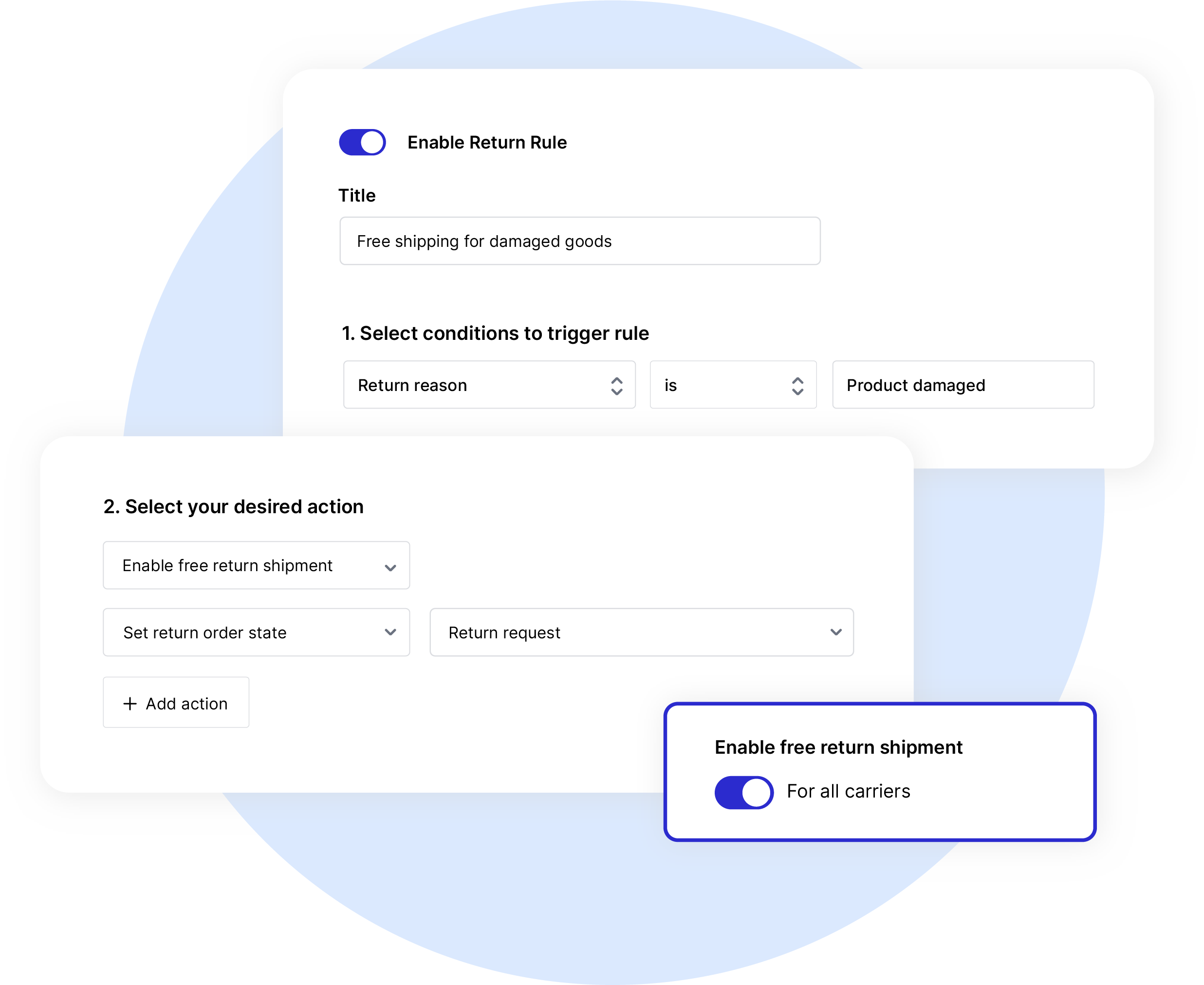
get started for free.
Play around and test out all features for free. Or schedule a demo with one of our colleagues if you'd like more info first.
